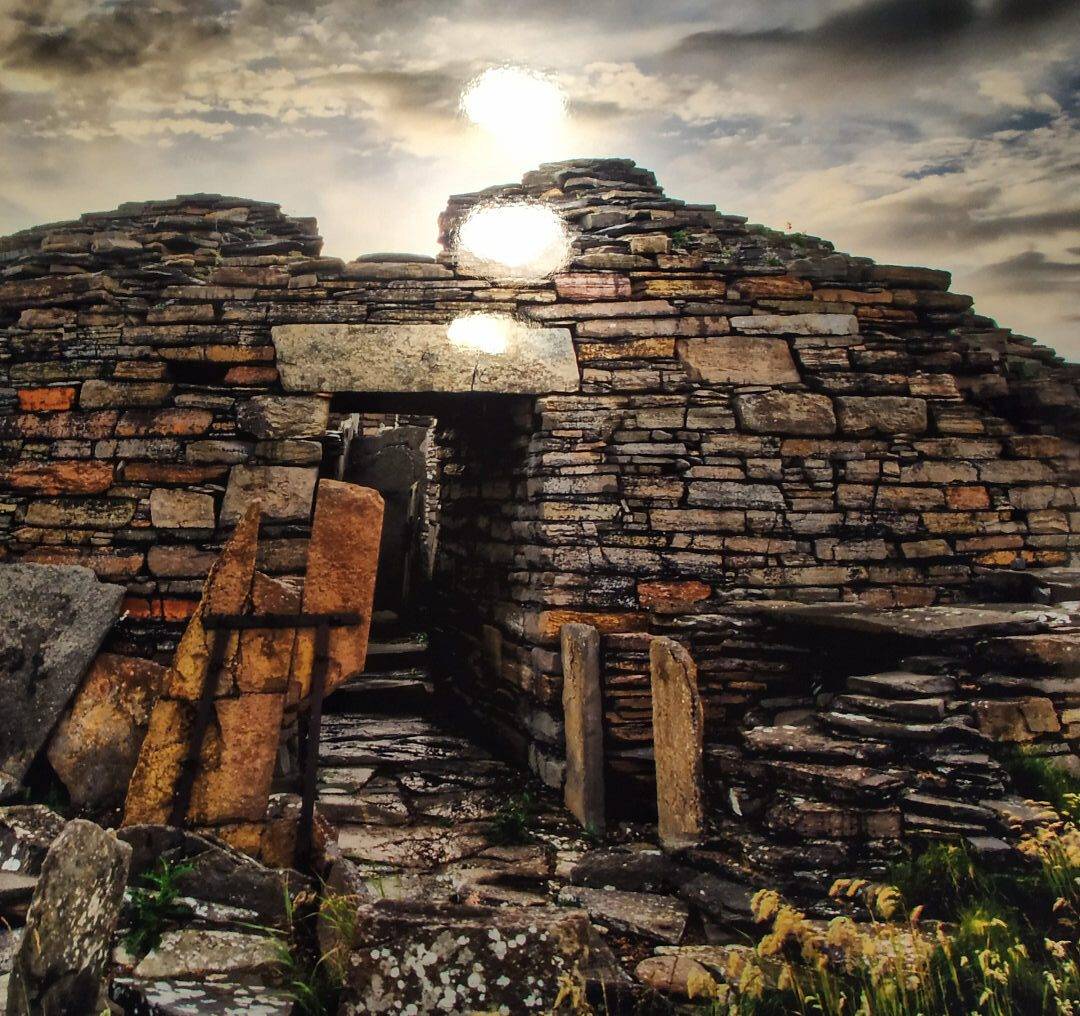Summary
The Midhowe Broch is a significant archaeological site located on the island of Rousay in the Orkney Islands of Scotland. It is a well-preserved example of an Iron Age broch, a type of complex roundhouse unique to Scotland. Named after the nearby Midhowe Chambered Cairn, the broch is part of a larger group of ancient structures that are collectively known as the “Westness Heritage Walk”. Its strategic location, architectural complexity, and the variety of artifacts discovered at the site provide a fascinating insight into the lives of the ancient people who built and used it.
Get your dose of History via Email
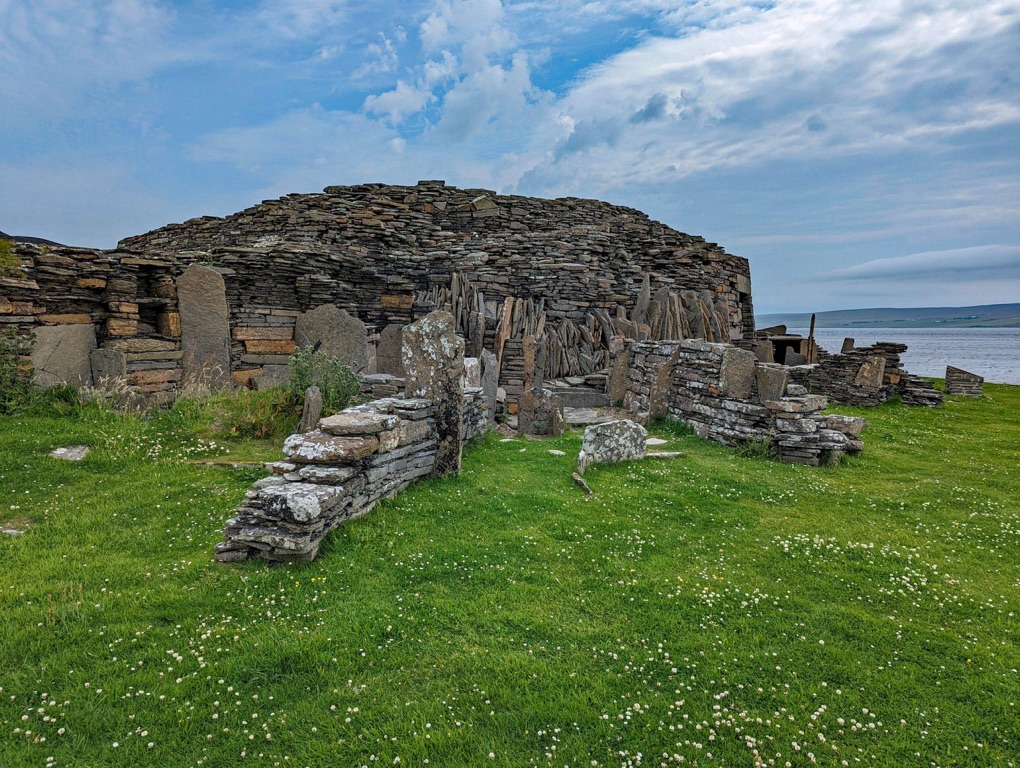
What is the historical significance of Midhowe Broch?
The historical significance of Midhowe Broch lies in its representation of the Iron Age in Scotland, a period marked by the construction of these unique roundhouse structures. It is believed to have been built around 200 BC and was in use until the end of the first millennium AD. The broch’s impressive state of preservation allows historians and archaeologists to study its structure and layout, offering insights into the architectural practices and societal structures of the time.
Midhowe Broch’s location on the island of Rousay, known as the “Egypt of the North” due to its rich archaeological landscape, further adds to its historical significance. It forms part of a complex of ancient structures that tell the story of human habitation on the island over several millennia. This context provides a broader understanding of the historical and cultural evolution of the region.
The broch’s historical significance is also tied to the variety of artifacts discovered at the site. These objects, which range from tools and pottery to animal bones, provide a snapshot of daily life during the Iron Age. They also reveal the trade and exchange networks that the inhabitants of Midhowe Broch were part of, highlighting their connections with the wider world.
Finally, Midhowe Broch’s historical significance is underscored by its status as a Scheduled Monument, recognizing its national importance. This designation ensures the broch’s preservation for future generations and underscores its role in Scotland’s rich archaeological heritage.
As a testament to the ingenuity and resilience of its builders, Midhowe Broch stands as a powerful symbol of Scotland’s Iron Age past. Its historical significance extends beyond its physical structure, offering a window into a bygone era and the lives of the people who shaped it.

What is the architectural significance of the Midhowe Broch and how was it constructed?
The architectural significance of the Midhowe Broch lies in its intricate design and construction. Brochs are unique to Scotland and represent a significant architectural achievement of the Iron Age. Midhowe Broch, with its well-preserved double-wall structure, provides a valuable example of this type of architecture.
The broch was constructed using local stone, and its circular design features a hollow wall containing a series of chambers. This double-wall construction provided insulation and structural stability, demonstrating the builders’ understanding of engineering principles. The entrance passage, complete with a guard cell, suggests a concern for security and defense.
The interior of the broch includes a central hearth and evidence of stone fixtures, likely used for storage or seating. This layout indicates a sophisticated understanding of spatial planning and domestic needs. The presence of a well within the broch also points to the importance of water access and hygiene.
Moreover, the broch’s strategic location overlooking Eynhallow Sound suggests it may have served as a lookout or signalling station. This location, combined with the broch’s imposing height, would have made it a dominant feature in the landscape, possibly reflecting the status of its inhabitants.
In conclusion, the architectural significance of the Midhowe Broch lies in its complex design, careful construction, and strategic location. These features not only reflect the technical skills of Iron Age builders but also provide insights into their social organization and way of life.
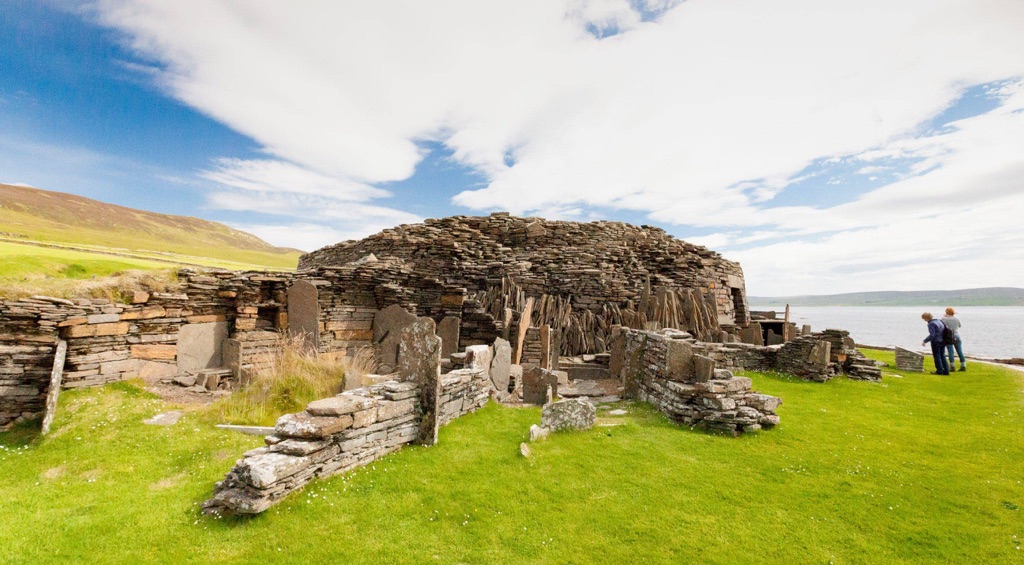
What was the purpose of the Midhowe Broch and how was it used by the people who built it?
The exact purpose of brochs like Midhowe remains a subject of debate among archaeologists. However, their size, complexity, and strategic locations suggest they served multiple functions, including habitation, defense, and social or political centers.
Midhowe Broch’s interior layout, with its central hearth and stone fixtures, indicates it was used as a dwelling. The presence of a well within the broch suggests the inhabitants had access to fresh water, an essential requirement for permanent habitation. The discovery of domestic artifacts, such as pottery and tools, further supports this interpretation.
The broch’s defensive features, including its entrance passage with a guard cell and its commanding view over Eynhallow Sound, suggest it may have been used as a fortress. The broch’s height and visibility would have made it an effective lookout point, allowing the inhabitants to monitor sea traffic and warn of potential threats.
Additionally, the broch’s size and complexity may reflect the social status of its inhabitants. It’s possible that the broch served as a residence for a local chieftain or leader, acting as a physical manifestation of their power and influence. The broch could also have served as a community center, hosting gatherings or ceremonies.
In conclusion, while the exact purpose of Midhowe Broch remains uncertain, its design and the artifacts found within it suggest it served multiple functions. It was not only a home but also a fortress, a watchtower, and possibly a symbol of social status or a community hub.
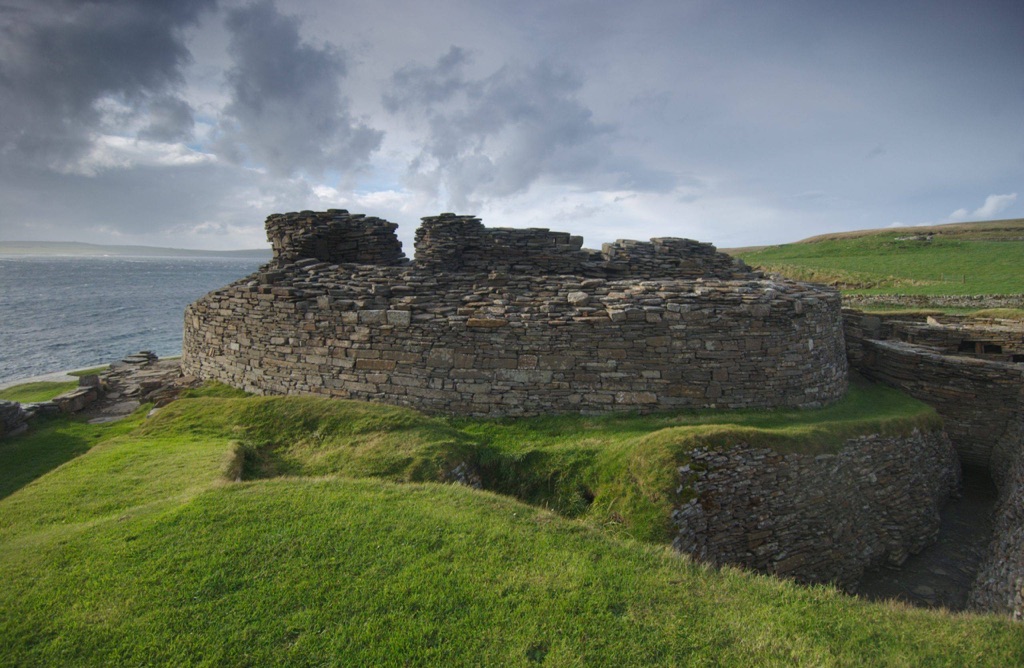
What types of artifacts have been discovered at Midhowe Broch and what do they tell us about the people who lived there?
Various types of artifacts have been discovered at Midhowe Broch, providing valuable insights into the lives of its Iron Age inhabitants. These artifacts include domestic objects, such as pottery and tools, as well as animal bones and plant remains.
The pottery found at the site is typically coarse and undecorated, suggesting it was used for everyday cooking and storage. The presence of quern stones, used for grinding grain, indicates that the inhabitants practiced agriculture and processed their own food.
The tools discovered at the site, including bone needles and stone scrapers, suggest a range of domestic activities, from sewing and leatherworking to butchery. The variety of animal bones found at the site, including cattle, sheep, and pigs, indicates that the inhabitants were farmers and herders.
Plant remains, including barley and wheat, further support the idea that the inhabitants of Midhowe Broch were engaged in farming. The presence of charred plant remains suggests they used fire for cooking and possibly for heat.
In conclusion, the artifacts discovered at Midhowe Broch paint a picture of a self-sufficient community engaged in farming, herding, and various domestic crafts. These objects provide a tangible link to the past, offering a glimpse into the daily lives of the Iron Age inhabitants of Midhowe Broch.
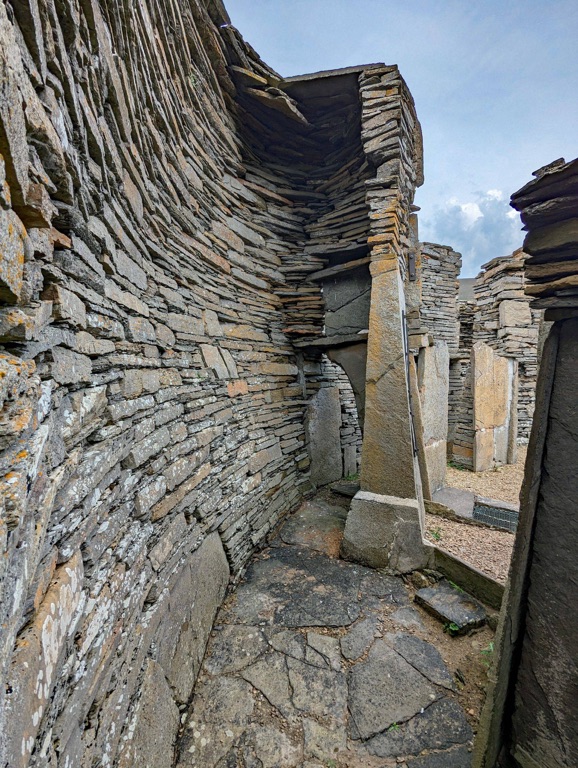
Conclusion and Sources
In conclusion, Midhowe Broch is a remarkable archaeological site that offers valuable insights into Scotland’s Iron Age. Its well-preserved structure, strategic location, and the variety of artifacts discovered at the site provide a fascinating glimpse into the lives of the ancient people who built and used it. From its construction and architectural features to its various uses and the artifacts left behind by its inhabitants, Midhowe Broch serves as a powerful testament to the ingenuity and resilience of Scotland’s Iron Age communities.
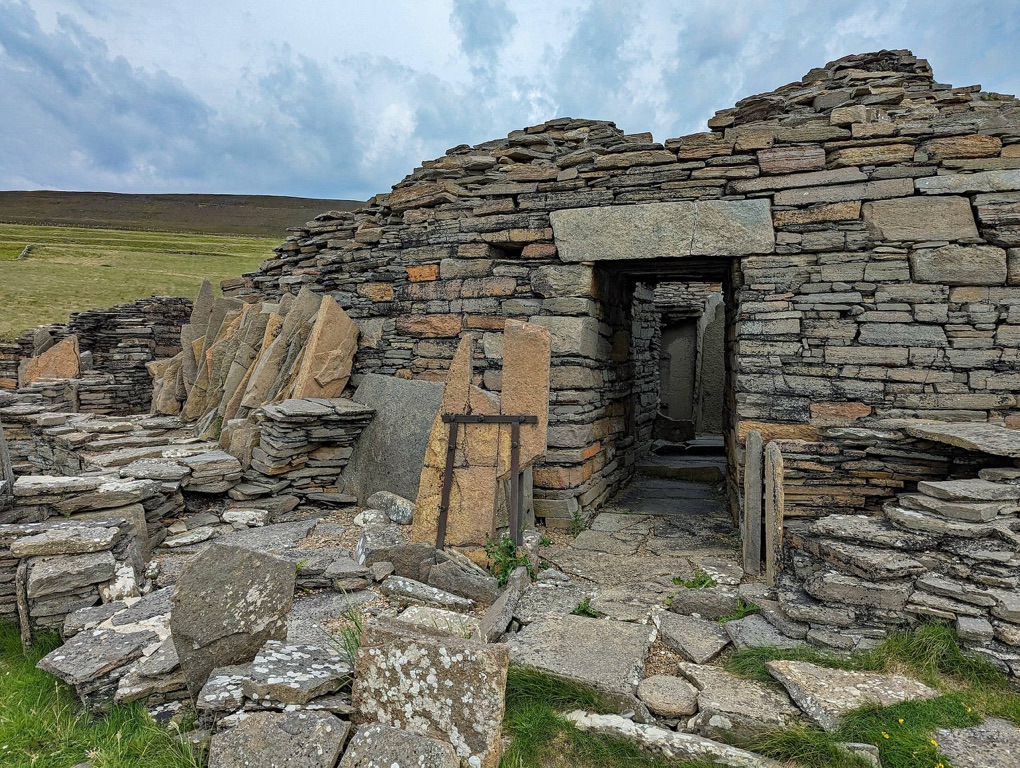
For further reading and to verify the information provided, the following sources are recommended:

